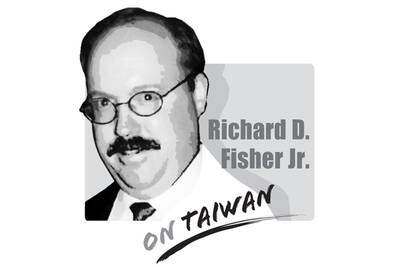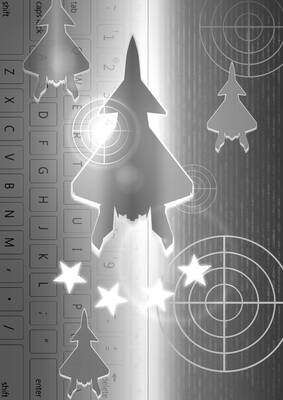There has been much talk about the Western response to the Russian invasion of Ukraine, the Ukrainians’ effective resistance and how the evolving situation would affect Chinese President Xi Jinping’s (習近平) calculations on launching an invasion of Taiwan.
However, a perspective that might have gotten buried in the flurry of reporting and analysis is the effect on ordinary Taiwanese, who have responded with messages of support and donations for Ukrainians. What do they think the situation means for their own safety? Will this affect the way they view political parties’ cross-strait policies?
Fear of a Chinese invasion could play into the hands of the Chinese Nationalist Party (KMT), whose consistent position since at least 2008 has been to seek further engagement with Beijing, with acceptance of the so-called “1992 consensus” as a prerequisite.
In 2012, the party cautiously welcomed the prospect of the signing of a cross-strait peace agreement, first proposed by Xi’s predecessor, Hu Jintao (胡錦濤), although former president Ma Ying-jeou (馬英九) insisted there was no timeline to do so.
The KMT promotes its pro-China policies and engagement with the Chinese Communist Party (CCP) as the best way to ensure cross-strait peace, or even peaceful unification, and portrays the dismissal of the the “1992 consensus” by President Tsai Ing-wen (蔡英文) and the Democratic Progressive Party (DPP) as a basis for cross-strait talks as a serious impediment.
The past few years have seen the electorate largely reject the KMT’s stance. If the KMT wants to capitalize on fears of the CCP’s intentions, with many Taiwanese supporting Ukraine, it would have to tread carefully.
This dynamic played out in an exchange between Premier Su Tseng-chang (蘇貞昌) and KMT Legislator Lo Ming-tsai (羅明才) in the Legislative Yuan on Tuesday last week. Lo used the occasion of International Woman’s Day to segue into telephone calls he said he had received from many mothers and other women expressing their concerns that war could happen in Taiwan. He said that all they wanted was a safe environment to live in.
Su responded by criticizing the Kremlin for ordering the invasion, and noted Ukrainians’ bravery. Lo refused to be drawn into criticizing Russia, merely saying that he did not want war to come to Taiwan. Su pushed him on the subject, saying that he had yet to hear Lo criticize the aggressors. Lo stuck to his guns. Su painted the picture of how a cruel dictator attacked a peaceful country, slaughtering innocents, with no legitimate basis for the invasion apart from a delusional appeal to recapturing his nation’s former glory.
Su said that war came to Ukraine because it was forced upon it, and Ukrainians’ unified response and willingness to protect their nation was the reason that foreign governments and nationals had come to their aid. Lo kept to his line, saying that he did not know much about Russia, but that he wanted peace, not war, in Taiwan.
It is unclear whether Lo was toeing the official KMT line with his refusal to blame Russia, but his reluctance to be drawn away from his core point was illustrative of the narrative that the KMT wants to be at the forefront.
Su was talking about Russia and Ukraine, but he was drawing an explicit parallel to China and Taiwan, and how the blame for any invasion could only be placed at the feet of Xi and the CCP.
Su and Lo were representing their respective parties’ stances. Lo wanted to focus on the desirability of peace, but refused to allow talk of the aggressor to enter the debate.
Appeals to capitulation are not a good look for a political party.

As the Chinese Communist Party (CCP) and its People’s Liberation Army (PLA) reach the point of confidence that they can start and win a war to destroy the democratic culture on Taiwan, any future decision to do so may likely be directly affected by the CCP’s ability to promote wars on the Korean Peninsula, in Europe, or, as most recently, on the Indian subcontinent. It stands to reason that the Trump Administration’s success early on May 10 to convince India and Pakistan to deescalate their four-day conventional military conflict, assessed to be close to a nuclear weapons exchange, also served to

The recent aerial clash between Pakistan and India offers a glimpse of how China is narrowing the gap in military airpower with the US. It is a warning not just for Washington, but for Taipei, too. Claims from both sides remain contested, but a broader picture is emerging among experts who track China’s air force and fighter jet development: Beijing’s defense systems are growing increasingly credible. Pakistan said its deployment of Chinese-manufactured J-10C fighters downed multiple Indian aircraft, although New Delhi denies this. There are caveats: Even if Islamabad’s claims are accurate, Beijing’s equipment does not offer a direct comparison
After India’s punitive precision strikes targeting what New Delhi called nine terrorist sites inside Pakistan, reactions poured in from governments around the world. The Ministry of Foreign Affairs (MOFA) issued a statement on May 10, opposing terrorism and expressing concern about the growing tensions between India and Pakistan. The statement noticeably expressed support for the Indian government’s right to maintain its national security and act against terrorists. The ministry said that it “works closely with democratic partners worldwide in staunch opposition to international terrorism” and expressed “firm support for all legitimate and necessary actions taken by the government of India
Taiwan aims to elevate its strategic position in supply chains by becoming an artificial intelligence (AI) hub for Nvidia Corp, providing everything from advanced chips and components to servers, in an attempt to edge out its closest rival in the region, South Korea. Taiwan’s importance in the AI ecosystem was clearly reflected in three major announcements Nvidia made during this year’s Computex trade show in Taipei. First, the US company’s number of partners in Taiwan would surge to 122 this year, from 34 last year, according to a slide shown during CEO Jensen Huang’s (黃仁勳) keynote speech on Monday last week.